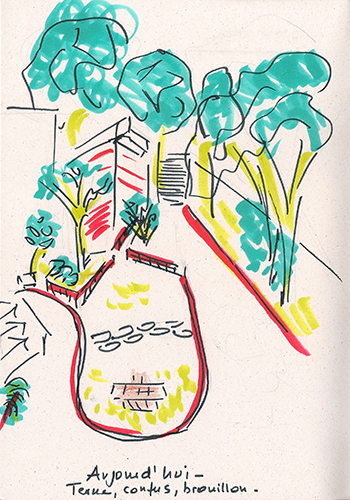
[Na] ⌂
Non Vegetal Creatures, Non Human Animals
Table of contents:
Living
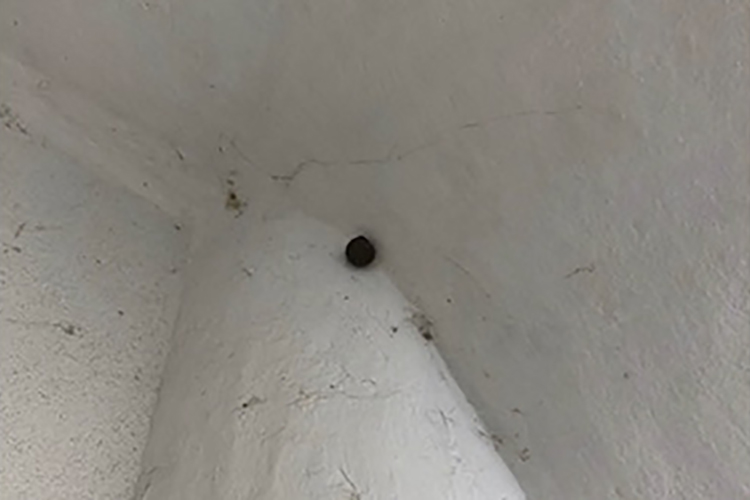
[Ge]
[Ge] A snail has taken up residence in the spiral staircase. There are no doubt a crowd of other small animals.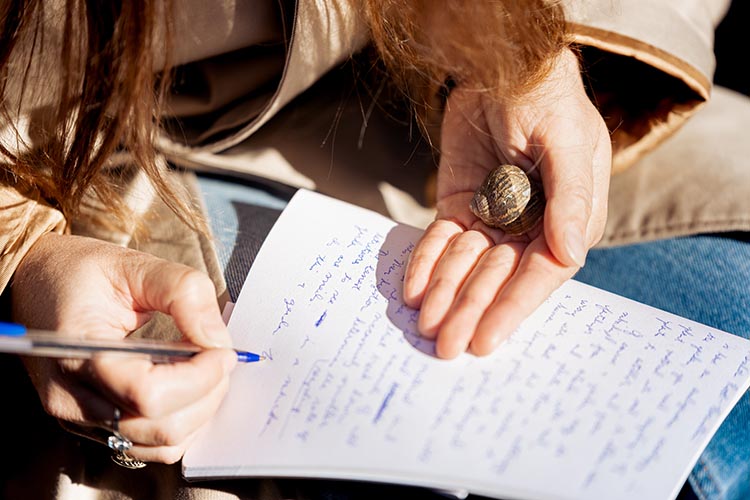
[Ch]
[Ro] To have an endogenous ecology in the garden, you need recycling - of plant material into soil, to allow new plants to establish and grow. Of course a garden may be subsidized from outside with soil, fertilizer and plants. There is nothing wrong with that but it makes it a human-designed garden, not a multispecies garden, a garden designed by plants themselves in interaction with other species. In order to have material and nutrient, recycling, you need detritivores, which are animals of all sizes and bacteria, that break down dead bodies into necessarily smaller bits. Their digestion determines the rate of recycling. The easiest detritivores to see in a suburban garden are snails. Is this a garden for snails?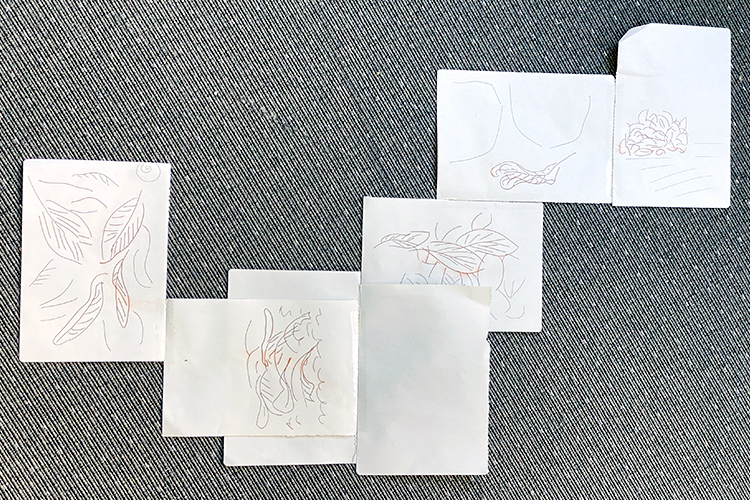
[Ro] This is a map of the garden from the perspective of a snail. It is connected by paths made of paste, which you can feel more than you can see. As I have folded the map, the paths may stick together, bringing the places together. The sites where snails can decompose the leaves are here made by decomposing and recomposing the booklet. It doesn’t fit in the booklet in the same way the snail garden isn’t isomorphic to the human garden it overlaps with. The images are sketches because I am not sure how snails sense and feel the landscape.
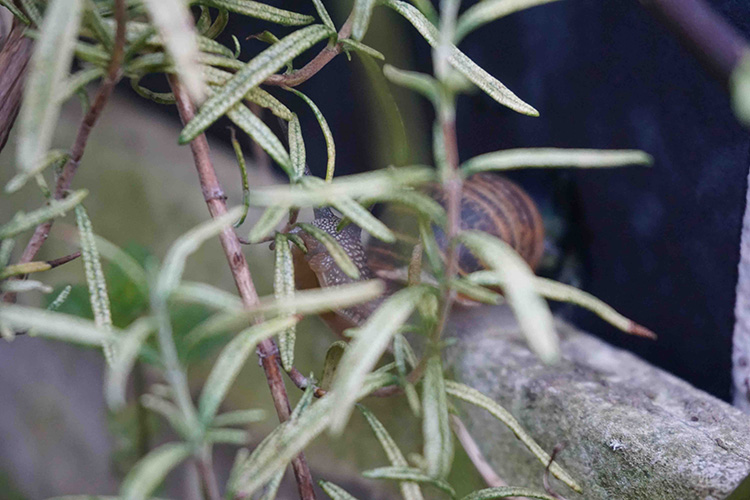
[To]
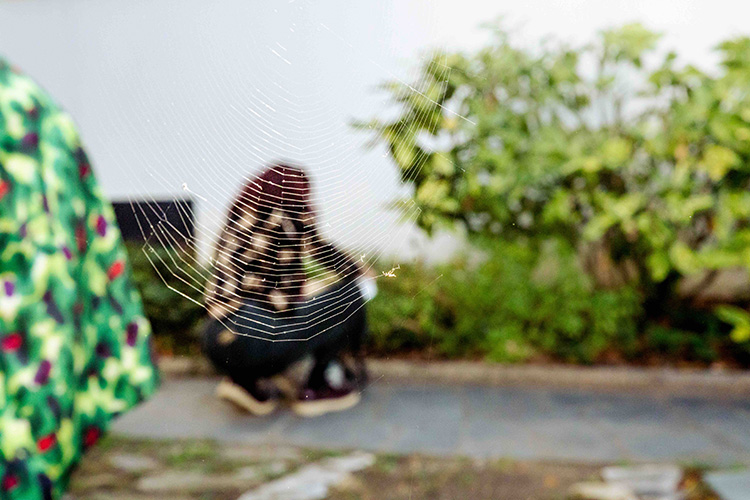
[Ch]
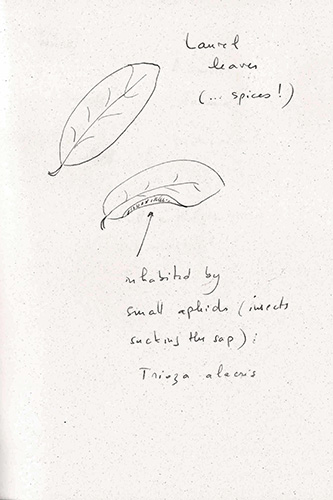
[Se]
[Se] Laurel leaves (... spices!) inhabited by small aphids (insects sucking the sap): Trioza alacris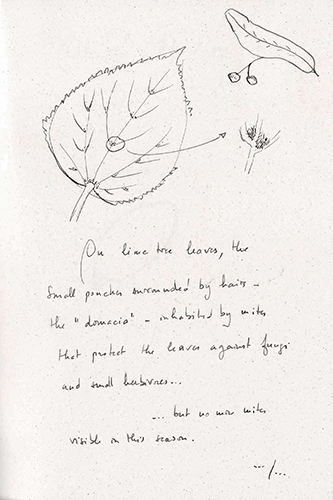
[Se]
[Se] On lime tree leaves, the small pouches surronded by hairs - the “domacia” - inhabited by mites that protect the leaves against fungi and small herbivores ... ...but no more mites visible in this season .../...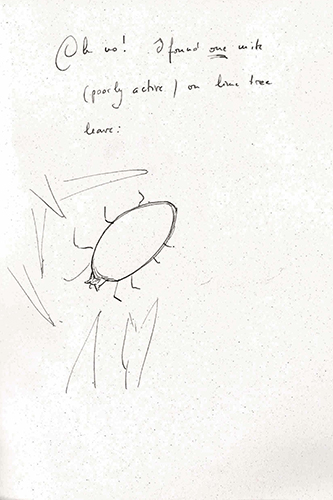
[Se]
[Se] Oh no ! I found one mite (poorly active) on lime tree leaveArtificial
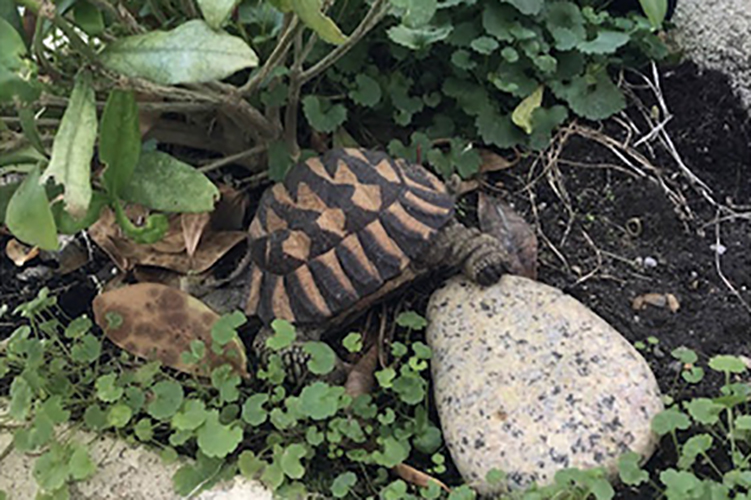
[Ge]
[Ge] Apart from the snail, then, I note the presence of some kind of strange red mosquito that has landed on my knee, and then a plastic turtle under the bellflower and some kind of owl carved on the surrounding wall.
Ghost
[Ro] Annick says that a big group of starlings comes everyday to eat the figs from the fig tree. I found one or 2 pieces of fig on the ground but no starling feces.
[Bu] The starlings were there, the days before we started the workshop. They were many, in flocks. The permanent resident of the house was trying to have them fly away using a rainbow colored umbrella. But they would come back. Jean-Luc Soret filmed them in a short video with his phone as they were so
noisy and fun. Apparently, the invasion of the Garden by a flock of humans during the workshop has been a better scarecrow.
This does not answer the lack of starling feces on the ground.
Perhaps they do it in the neighbour’s garden or on the roofs of the buildings. This shows, though, the impact of the context and the position of the observer on the observations: under certain circumstances what one observes is not what is.
[So]
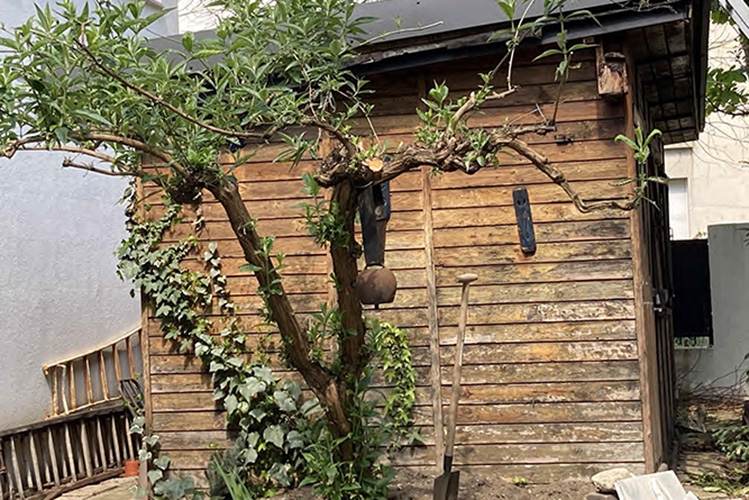
[Ge]
[Ge] And then there is the bell, which suggests the
presence of a cow somewhere.
Contribution material from
[Bo] Karine Bonneval
[Bu] Annick Bureaud
[Ca] Lucie Campagnolo
[Ch] Quentin Chevrier
[Ci] Laura Cinti
[Qu] Kim Doan Quoc
[Fi] Eva Figueras Ferrer
[Ga] Teresa Garnatje Roca
[Ge] Lauranne Germond
[Ko] Tatiana Kourochkina
[Len] Loïc Le Noan
[Ma] Kristina Maurer
[Mi] Marit Mihklepp
[Na] Sophie Nadot
[Pr] Cyrille Prestianni
[Re] Mar Redondo Arolas
[Ro] Meredith Root-Bernstein
[Bu] Marc-André Selosse
[Ser] Perrine Serre
[So] Jean-Luc Soret
[To] Anaïs Tondeur
[Va] Joan Vallès Xirau
Roots & Seeds XXI. Biodiversity Crisis and Plant Resistance is an international cooperation project between Ars Electronica (AT), Leonardo/Olats (FR), University of Barcelona (ES) and Quo Artis (ES) as lead partner. It is co-funded by the Creative Europe Programme of the European Union. Leonardo/Olats has the support of the Daniel and Nina Carasso Foundation.
Quo Artis (SP lead partner), Ars Electronica (AT), Leonardo/Olats (FR), University of Barcelona (ES).
Project developed with the support of the Creative Europe Programme of the European Union.


Leonardo/Olats
Observatoire Leonardo des Arts et des Techno-Sciences
À propos / About | Lettre d'information Olats News



Pour toute (re)publication, merci de contacter / For any (re)publication, please contact Annick Bureaud: info@olats.org
Pour toute question concernant le site, merci de contacter / For any issue about the website, please contact: webmaster@olats.org
Design Thierry Fournier
© Association Leonardo 1997-2022